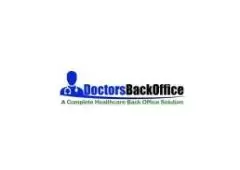Claim Submission and Electronic Claims.
Description
In the intricate landscape of healthcare reimbursement, efficient claim submission processes are essential for healthcare providers to receive timely reimbursement for the services they render. Claim submission, particularly through electronic means, represents a pivotal aspect of revenue cycle management, offering numerous benefits such as expedited processing, reduced errors, and improved cash flow. This article explores the significance of claim submission, the advantages of electronic claims, and strategies for optimizing the reimbursement process in healthcare settings.
The claim submission is the process by which healthcare providers request payment from insurance payers or government healthcare programs for services rendered to patients. It involves the compilation and submission of detailed documentation, including patient demographics, diagnosis codes, procedure codes, and other relevant information, to support the reimbursement request. Timely and accurate claim submission is critical for ensuring that providers receive appropriate payment for the care they deliver while minimizing delays and denials that can impact financial stability.
Electronic claims, also known as electronic data interchange (EDI) claims, offer a more efficient and streamlined approach to claim submission compared to traditional paper-based methods. With electronic claims, providers electronically transmit billing information to payers in standardized formats, such as ANSI X12 or HL7, using secure networks. This electronic exchange of data enables faster processing, reduced administrative burden, and enhanced accuracy compared to manual paper processes.
One of the primary advantages of electronic claims is the speed of processing. Unlike paper claims, which require manual handling and processing by payers, electronic claims can be transmitted instantaneously and processed automatically using advanced adjudication systems. This accelerated processing timeline translates into faster reimbursement for providers, leading to improved cash flow and financial predictability.
Furthermore, electronic claims offer significant cost savings and efficiency gains for healthcare providers. By eliminating the need for paper forms, postage, and manual data entry, providers can reduce administrative overhead and free up resources to focus on patient care. Additionally, electronic claims reduce the risk of errors and omissions associated with manual processes, such as illegible handwriting or missing information, thereby minimizing the likelihood of claim denials and rework.
Electronic claims also promote greater transparency and visibility into the claims submission process. Providers can track the status of electronic claims in real-time, allowing them to identify and address any issues or discrepancies promptly. Moreover, electronic claims facilitate seamless communication between providers and payers, enabling electronic remittance advice (ERA) and electronic funds transfer (EFT) for faster payment reconciliation and posting.
To optimize the reimbursement process through electronic claims, healthcare providers can implement several best practices:
Utilize practice management or billing software that supports electronic claims submission and integration with EHR systems.
Ensure accurate and complete documentation of patient encounters to support claim submission and coding accuracy.
Regularly monitor and analyze claim submission metrics, such as claim acceptance rates and rejection reasons, to identify areas for improvement.
Implement electronic eligibility verification processes to confirm patient insurance coverage and benefits prior to claim submission.
Stay updated on coding and billing regulations, payer policies, and industry standards to ensure compliance and maximize reimbursement.
In conclusion, claim submission, particularly through electronic means, plays a critical role in the healthcare reimbursement process. Electronic claims offer numerous benefits, including faster processing, reduced errors, and improved efficiency, that can enhance financial performance and operational effectiveness for healthcare providers. By embracing electronic claims and implementing best practices for optimization, providers can streamline the reimbursement process and navigate the complex landscape of healthcare finance with confidence.
US Address
233 Clear River Pl, Cary, NC 27519
+1 214 628 1717 / +91 866 767 7019






You must log in or register a new account in order to contact the publisher
Useful information
- Avoid scams by acting locally or paying with PayPal
- Never pay with Western Union, Moneygram or other anonymous payment services
- Don't buy or sell outside of your country. Don't accept cashier cheques from outside your country
- This site is never involved in any transaction, and does not handle payments, shipping, guarantee transactions, provide escrow services, or offer "buyer protection" or "seller certification"






